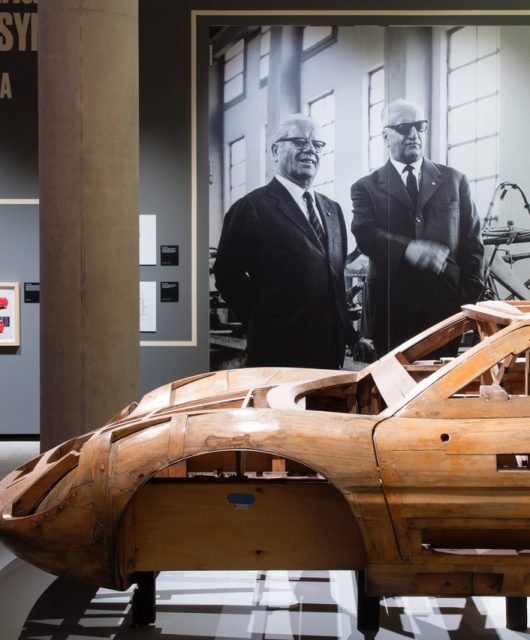Brand Building For Destinations: Q&A With Spark’s Dulani Porter
BB: Destination branding is all about identifying the destinations’ strongest and most competitively appealing assets in the eyes of its prospective visitors. In your opinion, how is branding a destination different than branding a company?
DP: In many ways, it is not all that different. Or at least, it shouldn’t be. Like many consumer brands or products, there are features and benefits that a company can speak about. However, the most successfully branded companies are the ones that stand for something clear and meaningful to their customers. They are the ones that take a stand for what they believe. Like companies, destinations brands must fight the urge to be all things to all people. The strongest destination brands have a clear and distinct belief system that is apparent in all that they say and do. By creating a clear and distinct position, it enables destinations to move beyond being just a place to consumers. It creates opportunity to become an experience people aspire to and own valuable emotional real estate in the minds of their audience.

BB: Storytelling has become an instrumental pillar of a destination development strategy. How can you build a compelling story when branding a destination?
DP: A compelling brand story begins by defining a core belief system for a destination. It must be a truth about the destination that is relevant to their core audience. And a key part of creating a successful destination brand story is to ensure that the truth is shared by its local community. In today’s travel industry, it’s clear that travelers want more than just a place to visit. They want to experience it in a way that makes them feel like they are a part of the community. Wefind that the way to create a sustainable destination brand begins by understanding what the locals find to be unique and special about their home. In these stories, an authentic truth will become clear about the destination and the stories that are told will resonate with visitors who want to be a part of that experience. So, if a local community values things like art, music and culture above all, those are the stories a destination will share with potential visitors. And when they arrive, they will find that story to be true and find opportunities to immerse themselves in the destination and create connections that will keep them coming back time and again.
BB: What differentiates a destination brand is the ability to emotionally connect with its visitors to the place which makes them want to return. How can destination brand marketers build, retain and sustain an emotional click with the visitors?
DP: Related to the previous answer, the emotional click happens during the experience itself. Many destination brands focus much of their effort on the pre-arrival piece of the customer journey. It’s fair to say there is opportunity for destination brands to create an emotional connection in the inspiration and discovery phase of the travel planning process. However, the most meaningful and long-lasting emotional connections between a visitor and a destination form while they are actually there. And often it’s about more than just the places they visit and the things they see. It’s the interactions they have with other people—the connections they make—that are the root of those unforgettable moments. Therefore, destinations cannot underestimate the importance of the role that both the travel industry and local communities play in the destination experience. A great example of this is how San Diego capitalized on a culture of beer that was authentic to its local community. They had seen a sharp rise in craft brewers and as a destination they decided to create a story around becoming The Craft Beer Capital of America. Beyond the breweries, they created experiences that included beer tours, beer education and resources and tools that enabled a visitor to fully immerse themselves in this cultural activity that was a part of the heartbeat of the local community. In the future, I believe we will see many destinations begin to think about their local populations and personalities as a key pillar of their brand stories.
BB: The Middle East’s ultimate start destination brand is UAE’s Dubai, topping all regional tourism competitiveness reports. In a nutshell, from your point of view, what makes it a great destination brand?
DP: Dubai encapsulates an invitation to people from every where to believe that the impossible is possible. For many years, the world has seen Dubai create architectural wonders like the Burj Al Arab Hotel, and raise islands from the ocean with Palm Islands and Dubai World. This spirit of imagination becoming reality is core to their brand story and encapsulated in the line “Discover all that’s possible in Dubai”. This simple phrase is a clear invitation to their visitors to come and imagine, experience and indulge in all that the destination has to offer. It’s a promise that when you come to Dubai, you’ll discover the city and a little something about yourself in the process. And they’ve done all of this while maintaining a clear position of luxury. The city has a very clear idea of who they are and the spirit they embody. It’s backed up by doing things that other cities around the world have yet to imagine. And they have created a destination story that appeals to travelers from every corner of the world. This is a destination that has created tremendous success by appealing to travelers’ sense of imagination. It’s an invitation that just about anyone one would want to accept.
BB: Can you mention some of the key principles when creating a destination brand?
DP:
Look Within: Understand the priorities of the local communities who create the culture of a destination. By tapping into what the community finds to be unique, it enables a destination to find an own able story for its brand.
Have A Clear Point of View: Create an overarching belief system that will serve as the foundation of your brand story and position. Then use this as the compass for your decision-making around what you say and do.
Don’t Be For Everyone: Understand who your destination is for, and be comfortable with who it is not for. Remember that it’s okay to not be all things to all people.
Be Specific & Selective: Be comfortable telling some of your story to some of your audience and resist the urge to try to water down your message. Consumers expect content to be relevant to their interests and needs all the time. Take time to understand what matters to them, be selective with your content and speak to them on their terms.Be A Part of The Whole Journey: Know that your destination experience is critical part of your brand — the marketing and advertising is only the beginning of your relationship with your consumer.
Be A Part of The Whole Journey: Know that your destination experience is critical part of your brand — the marketing and advertising is only the beginning of your relationship with your consumer.





